Most might have heard of the term hyperinflation before. The term itself refers to a very severe degree of inflation, although there is not a clear cut definition of what constitutes as hyperinflation. Most economists generally describe it as a monthly inflation rate of 50% or higher.
Inflation itself is not a recent phenomenon with examples of it dating back to antiquity, such as the collapse of the Roman currency during the third century. Comparably, hyperinflation is a considerably more recent phenomenon, with the first documented case of it occurring during the French revolution with the introduction of the Assignat banknotes issued from the end of 1789 to 1799.Due to the vast quantity assignats issued, inflation would start to quickly rise from around 1793 and by 1795, the situation would become untenable and by November 1796, prices had risen by more than 24000% compared to the start of the revolution.

1 The decline of the Roman currency. Source: "Decline of the antoninianus" by Rasiel Suarez is licensed under CC BY-SA 3.0.
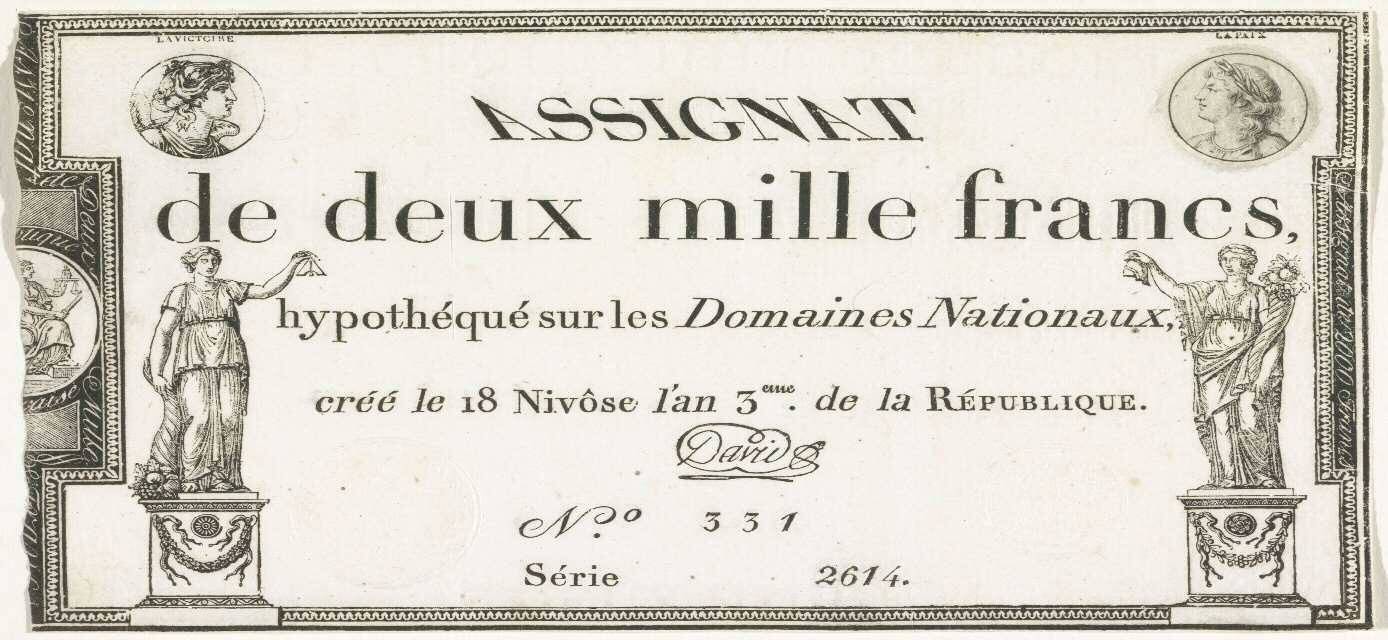
2. Assignat of 2000 francs Source: Asignaat van 2000 frank, 1794-1795 Assignat de deux mille francs (titel op object), RP-P-OB-86.594-22" by Rijksmuseum is marked with CC0 1.0.
A more well-known and recent example of hyperinflation that comes to mind is the Zimbabwean dollar, which holds the dubious honour of having the most zeros featured on a banknote. The peak rate of inflation of the Zimbabwean dollar occurred in November 2008 with a monthly rate of 89.7 sextillion percent, which effectively made the banknotes worthless as currency, with a loaf of bread costing over 550 million Zimbabwean dollars at one point.
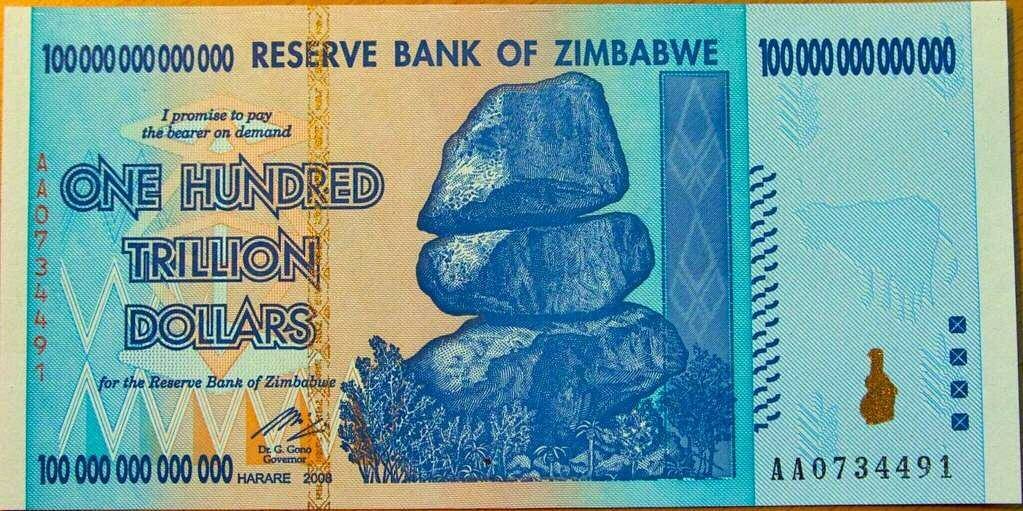
3. A One Hundred Trillion Zimbabwean dollar banknote, the highest denomination issued by the government of Zimbabwe. Source: "100 Trillion dollars" by drewgstephens is licensed under CC BY-SA 2.0.
However, both of these would pale in comparison to the inflation of the Hungarian Pengoo, whose highest monthly inflation rate was 41.9 quadrillion percent by July 1946. This meant that every 15 hours, the pengo would lose about half of it’s value with a loaf of bread costing 5.85 billion pengos at the height of the inflation.
This blog is intended to introduce the history of the pengo, its various banknote series and to discuss the reasons for its hyperinflation.
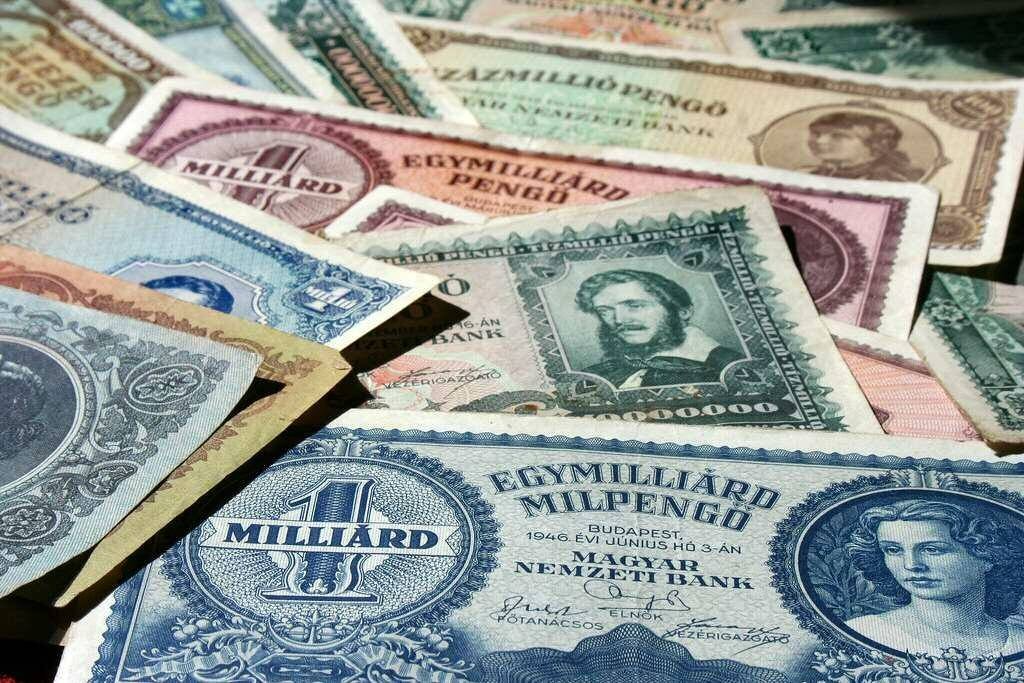
4. A bunch of Hungarian Hyperinflationary banknotes. Source: "After WWII - Hungarian inflation paper money, 1946" by takacsi75 is licensed under CC BY 2.0.
The introduction of the Pengo
The pengo was instituted in January 1st 1927 as the currency of the Kingdom of Hungary. However the reasons for its creation can be traced back to its immediate predecessors, the Austro-Hungarian korona (1892-1919) and the Hungarian korona (1919-1927).
During the course of WWI, the Government of the Dual-Monarchy would attempt to finance the war by issuing vast quantities of banknotes, the degree of this was so severe, that over 83 percent of war expenses would be covered by issuing new banknotes. As such, by 1915, the korona would become a purely fiduciary currency with no precious metal backing and by 1919 at the end of the conflict the amount of korona banknotes in circulation had increased by over 15 times compared to it s pre-war numbers. The inflation would be exacerbated by the issuing of war bonds and the taking unsecured loans in order to finance war expenses.
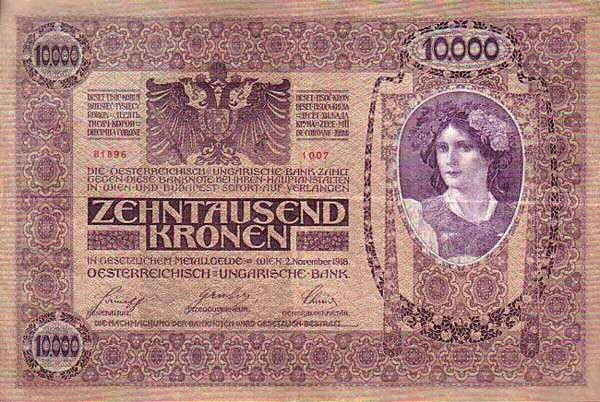
5. An inflationary 10000 korona banknote.
With the end of the conflict and the dissolution of the Austro-Hungarian Monarchy, many hoped that the korona might remain the official currency of the successor states of the Empire, but these hopes were dashed as the Kingdom of the Serbs, Croats and Slovenes future Yugoslavia would be first ones to start over-stamping of the Korona banknotes.
In the case of the newly independent Hungary, the over-stamping of the notes would only take place in 1920 due to several factors, most important of which was the quick changing of governments and the occupation of the country by Romanian, Serbian, Czechoslovak and French armies. In the end, the government of Mikls Horthy would win out and proclaim the Kingdom of Hungary on 29 February 1920 with Horthy becoming the regent of the Kingdom and the dethroning of the Habsburg dynasty.
In 1921, the government would issue the first official Hungarian korona banknotes with the foundation of the Hungarian Royal State Note Institute. These new notes would be exchanged at par with the older, defunct notes.
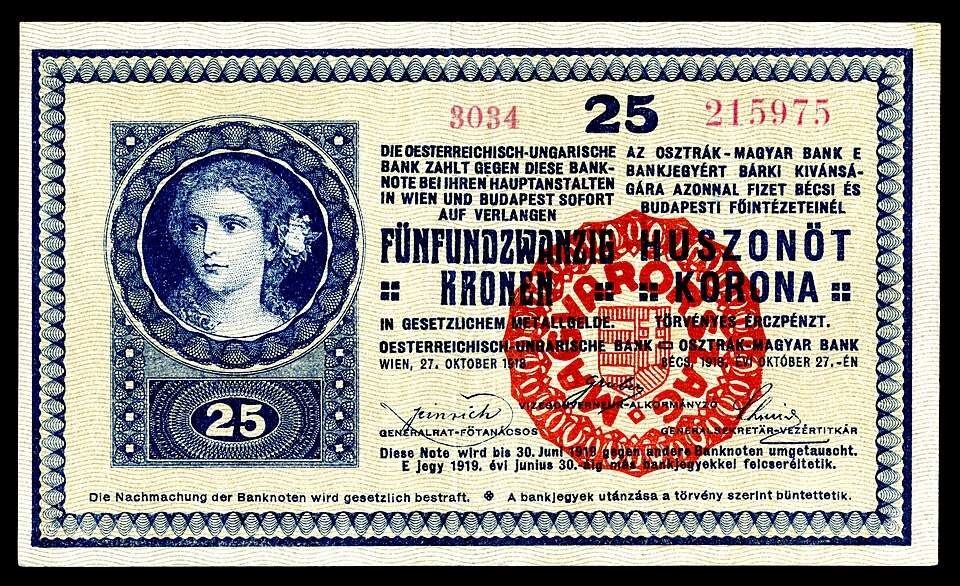
6. An overstamped 25 korona banknote. Source: By Naonal Museum of American History - Image by Godot13, Public Domain, https://commons.wikimedia.org/w/index.php?curid=43877854
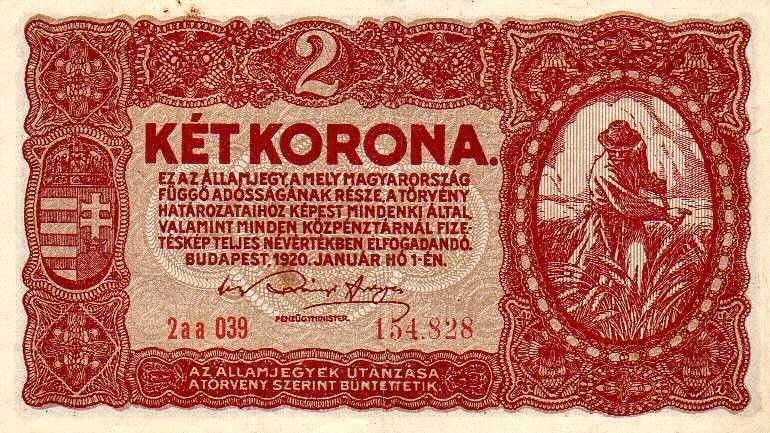
7. The obverse of a new two korona banknote dated to 1920 Source : By Royal Hungarian State Bank / Hungarian Ministry of Finances, Budapest - own scan of an obsolete banknote Timur lenk, Public Domain, https://commons.wikimedia.org/w/index.php?curid=976402
During this period, under the tenure of the Hungarian Minister of Finances, Hegedus Lorant, three laws would be introduced in order to counteract inflation, stabilize the value of the korona and to ensure a sound national budget. These laws would introduce a capital levy tax that could be paid in land, money, mortgage bonds, etc.
This initiative would be undermined by the voluntary nature of these payments and the exemptions of the largest landholders in the country, the nobility. Thus, by the end of 1921, the plan started to collapse and the mass printing of banknotes would start again. The office of Hegedus Lorant would be taken by Kallay Tibor who would continue this policy. Thus by 1924-25 the inflation would reach its peak with one gold korona being worth over 15000 korona banknote.
In 1924, the Hungarian parliament would set up the Hungarian National bank replacing the Hungarian Royal State Note Institute with one of it’s main goals being the acquisition of finances in order to cover the creation of a new type of currency in order to replace the hyper-inflated korona. This task would be greatly helped by the taking of a 4 million pound loan from the Bank of England.
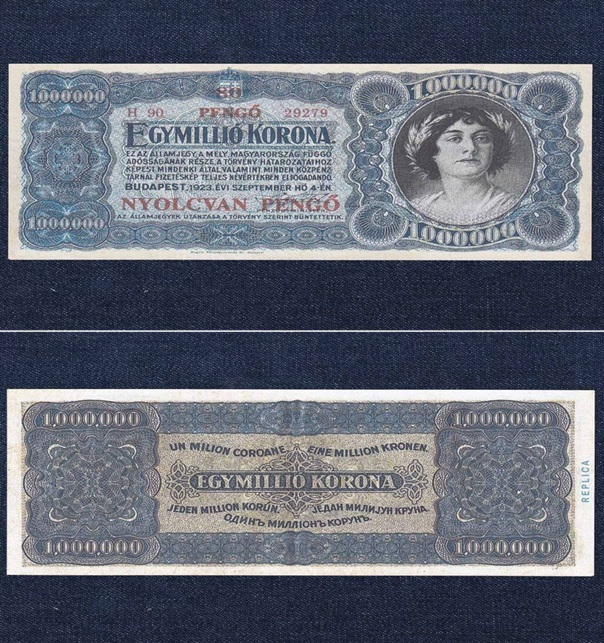
8. The obverse and reverse of a one million korona banknote, the highest denomination released into circulation.
Thus, the new currency, the pengo would replace the korona with a conversion rate of 12500 korona to 1 pengo on 1 January 1927, however, the old korona banknotes would be accepted as currency for a short period even after their replacement.
